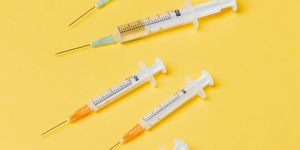Turning Face Masks Into Smart Devices
Face masks have become a ubiquitous part of our daily lives. Since the start of the COVID-19 pandemic, face masks have been identified by experts as one of the most crucial mitigation strategies available to help curb the spread of the coronavirus. At the height of the pandemic, an estimated 130 million masks were worn each month.
Perhaps in light of the pervasive use of face masks, particularly among healthcare workers, researchers have taken this crucial mitigation strategy and expanded the uses of face masks by creating sensors that turn them into a “smart” health monitoring device.
According to a study published in the Proceedings of the ACM on Interactive Mobile Wearable and Ubiquitous Technologies, researchers have developed small sensors that can attach to various types of face masks. Dubbed the “fitbit for the face,” or “FaceBit,” these sensors work like a wearable monitoring device, capturing information about respiration, heart rate, and more. Like other wearable devices, FaceBit transmits information to a smartphone app, which can tell a wearer if they are experiencing unexpectedly high heart rates, leaks in a mask, and other physical health parameters. Researchers believe these “FaceBit sensors” could be particularly useful for healthcare professionals who need to wear masks regularly during their shifts.
The sensor was developed in conjunction with doctors, nurses, and other clinical practitioners. The goal was to design something that met their needs, which was resoundingly a need for a high-quality mask that maximized protection for workers coming in contact with contagious individuals. While FaceBit doesn’t entirely solve the problem of effective masks, it can alert a wearer if, for example, a mask becomes loose or isn’t properly sealed on someone’s face.
Though these sensors do require a battery, they are designed to draw energy from sources around the sensor, including a wearer's own breathing. According to the study, this enabled the sensor to operate for about 11 hours before needing to be charged, which can be useful for healthcare professionals who work long shifts.
The study author’s note that despite testing the sensors in real-world situations, clinical trial testing is needed.
Sources: EurekaAlert!; Proceedings of the ACM on Interactive Mobile Wearable and Ubiquitous Technologies; Frontiers in Environmental Science








